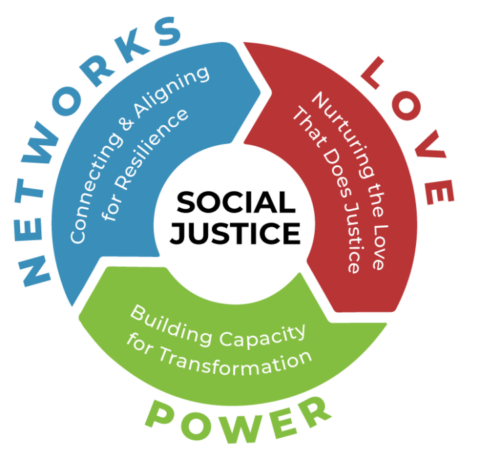From Stakeholders to “Care-holders”
August 15, 2022 1 Comment
“The challenge is to replace practices that distance and disconnect with ones that evoke empathy, caring, and creativity.”
Carol Sanford
In our collaborative change work with organizations and multi-sector networks, we at IISC are adamant about doing thoughtful stakeholder analysis at the start of an initiative, and returning to this work periodically, asking the question, “Who are we missing?” As important as this can be, not everyone loves the word “stakeholder.” It can sound somewhat wonky and impersonal, and I myself have been thinking about the word “stake” and what it says about people.
To have a stake means “to have a share, interest, or involvement in something or someone.” Going back to the early 1700s, a stakeholder was one to whom money was deposited when making a wager/bet. And in the colonizing of what is now the United States, stakes were literally placed on lands that were stewarded by indigenous peoples as a way of claiming ownership of them. What none of this conveys is a sense of care or caring. I don’t mean whether or not someone cares (or is indifferent), but whether there is a genuine heartfelt sense of connection or deep desire to protect, create and/or contribute. Increasingly, this sense of care and caring (along with reckoning and making amends) is showing up as a crucial factor in making the difficult work of complex collaborative (systemic and culture) change happen.
Recently, Anne Heberger Marino tweeted something about translating “stakeholders” to “careholders” in her/their mind to get beyond “detached objectivity.” I really like and resonate with that! And playing with that term seems to raise some interesting possibilities. In general, when we at IISC work with partners to consider who might been engagd in collaborative social change work, we uplift the following categories/criteria (applied to individuals and groups) with respect to a given initiative:
- Is likely to be impacted by the outcome of the effort/decision
- Voices unheard or typically marginalized perspectives
- Functions as a connector in or across sector(s)/field(s)
- Is in a position to implement the effort/decision
- Is in a position to prevent it from being implemented
- Has relevant information or expertise (including lived experience)
- Has informal influence without authority
- Is responsible for the final decision
Applying a lens of “caring” or (or even “loving”) to these criteria brings another level or nuance. Beyond functionality and/or positionality, who really connects to and cares about what we are trying to do? This can raise the bar for the analysis and also potentially expand possibilities for the initiative. Farmer, poet and essayist Wendell Berry has talked about the importance of what he calls “the turn towards affection.” Having spent many years reflecting on and pushing back against the unfortunate demonstrated human capacity to despoil landscapes and demonize “the other,” he takes a strong stand for deep connection, or affection:
“For humans to have a responsible relationship to the world, they must imagine their places in it. … By imagination we see it illuminated by its own unique character and by our love for it.”
What if we asked ourselves and others what might be illuminated by people bringing their affection and/or love to the initiative, work, place and/or goal in question? Who already has this? How might we inspire it in others?
“Cares deeply about the effort/decision” might become its own worthy category/criterion. And in looking at the criterion from the list above, “Is in a position to prevent it from being implemented” (the proverbial “blocker(s)”), bringing a lens of care might help us wonder what perceived “adversaries” actually care about/love/connect to. Might this kind of curiosity help to build bridges and understanding from the outset?
In addition, recent conversations among a group of IISC staff and affiliates about these categories and criterion have raised important considerations of Indigenous peoples and perspectives. Increasingly we are seeing an interest in acknowledging and addressing harms done, validating indigenous ways of knowing, and working to establish “right relationships” and “decolonize” systems. So we might add another criterion/consideration: “Is indigenous to the lands we are on or where the work is happening.” And perhaps by extension of these notions of indigeneity and caring, we might also consider who: “Speaks for the land” (see the work and writings of Jeannette Armstrong, of the Okanagan people) and also “Speaks for the more-than-human realm.”
Finally, and relatedly, I am reminded of our IISC Collaborative Change Lens, which includes the facet of “love” as a force for social transformation and justice. As we say on our website, “We nurture the love that does justice: the desire for the wellbeing of others, which is central to every social change movement. Love infuses our power with compassion, reclaims our resilience, heals our wounds, causes us to see ourselves as connected, and enables our radical imagination.”

1 Comment
It’s interesting..